How Overstock.com Is ‘Breaking Out Of The Filter Bubble’
Article by Ernan Roman
Featured on CMO.com
Despite the fact “algorithms” is part of her title, Kamelia Aryafar, Overstock.com’s chief customer and algorithms officer, is all about gathering explicit feedback from customers rather than relying solely on computer data and making click-based assumptions.
Aryafar, who leads the online retailer’s machine learning, data science, data engineering, and analytics functions, joined Overstock.com in 2017. Her teams have integrated machine learning and artificial intelligence algorithms to assist with a variety of functions, including pricing, ranking, search, and customer relationship management.
Aryafar shares her thoughts about personalization, “filter bubbles,” and customer experience in this edition of “4 Questions for Digital Innovators.”
1. What is the one marketing topic that is most important to you as an innovator?
It’s been a race for companies to inject as much personalization into the customer experience as possible. However, what retailers need to consider as they create more personalized experiences is how to manage the problem of pushing customers into filter bubbles. It can be tough to balance serving up personalized content without inundating customers with overly similar items.
Overstock thinks about breaking out of the filter bubble [in two ways]. [We] close the feedback loop with both explicit and implicit feedback, learning from customers without adding barriers and ultimately increasing her distance to cart. This means making our system interactive and gathering that explicit feedback outside of the cumbersome process of providing ratings. An example of this would be engaging her in a style quiz.
[Second], we leverage implicit feedback through multimodal learning to start identifying what she is interested in. Over-reliance on a single source of data causes heavy biases to be built into the models, exacerbating the filter bubble effect. Diversifying our input data helps us diversify our end product.
2. Why is this so important?
How many times have you bought an item online, then proceeded to suffer ads for that same item for weeks to come? This can be perceived as spammy and can turn the customer off to your brand. Gathering explicit feedback from customers helps us disengage from these click-based assumptions and, ultimately, steer them away from filter bubbles. This could be as simple as allowing her to sort by price, which would give us explicit feedback that she is likely looking for something inexpensive.
3. How will this improve the customer experience?
Customers are looking to be inspired. They come to our site because they are ready for a new look. Homes are often a reflection of one’s self, so it’s critical to help customers feel that content was curated especially for her, while still ensuring that she has a say in what is being shown to her. This could be as simple as allowing her to sort by price, which would give us explicit feedback that she is likely looking for something inexpensive.
By leveraging both explicit and implicit feedback, we can make the website easier to navigate, easing the burden on the user. This manifests as improving search results and recommendations, as well as empowering marketing campaigns to engage customers more effectively. We are actively experimenting in improving our recommendations by incorporating different modalities of data to improve diversity of products shown to the user while maintaining relevance.
4. How will this improve the effectiveness of marketing?
Closing our feedback loop and breaking out of the filter bubble will inform marketing campaigns about whom to target and with what content to target them. Improved personalization in campaigns will increase the volume of your sales, but breaking out of the filter bubble is what will improve sales diversity, enabling more cross-category sales.
Bonus: What is your favorite activity outside of working hours?
I have been fortunate as well as diligent in building an incredible team, so you can find me spending time collaborating with them to contribute research and innovations to new and evolving fields in the form of professional and academic journals. As an advocate for increasing the number of women in STEM, I spend time mentoring and trying to speak at as many conferences as I can. It’s my hope to inspire confidence and break down barriers to entry for women aspiring to careers in science and engineering.


